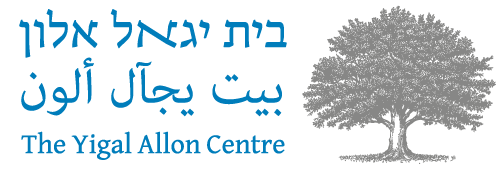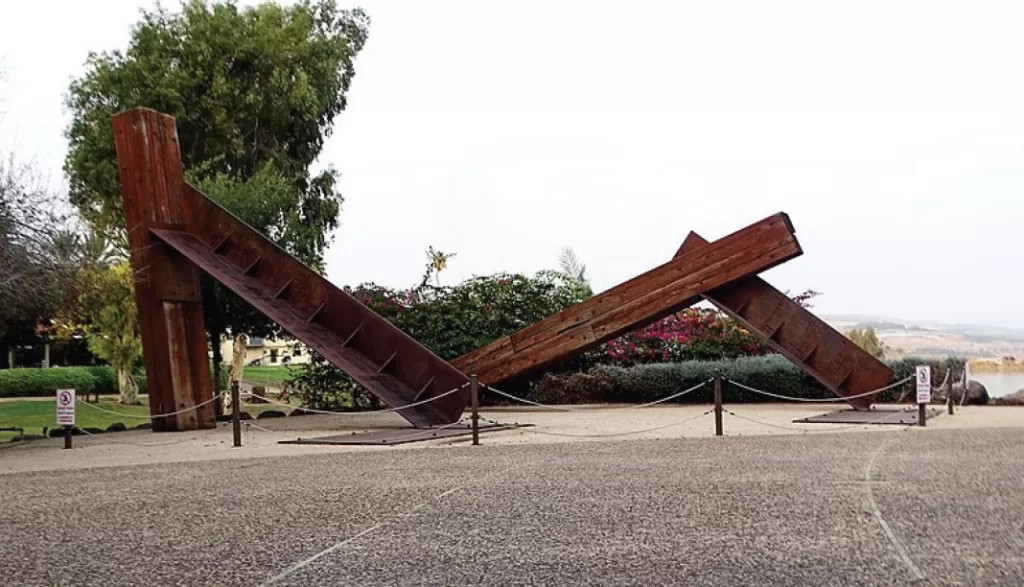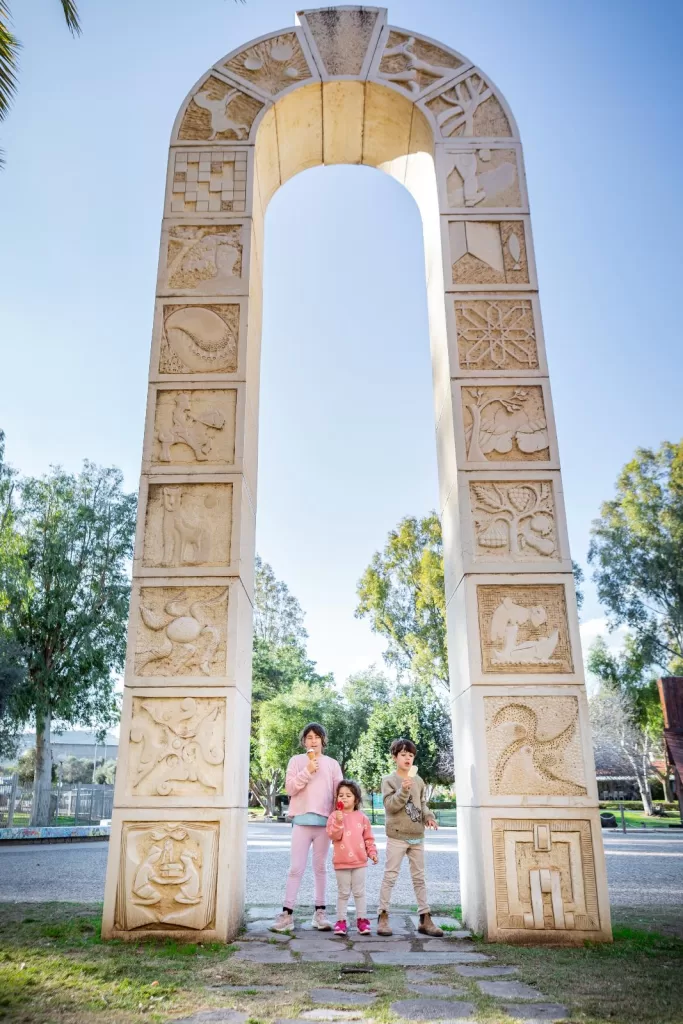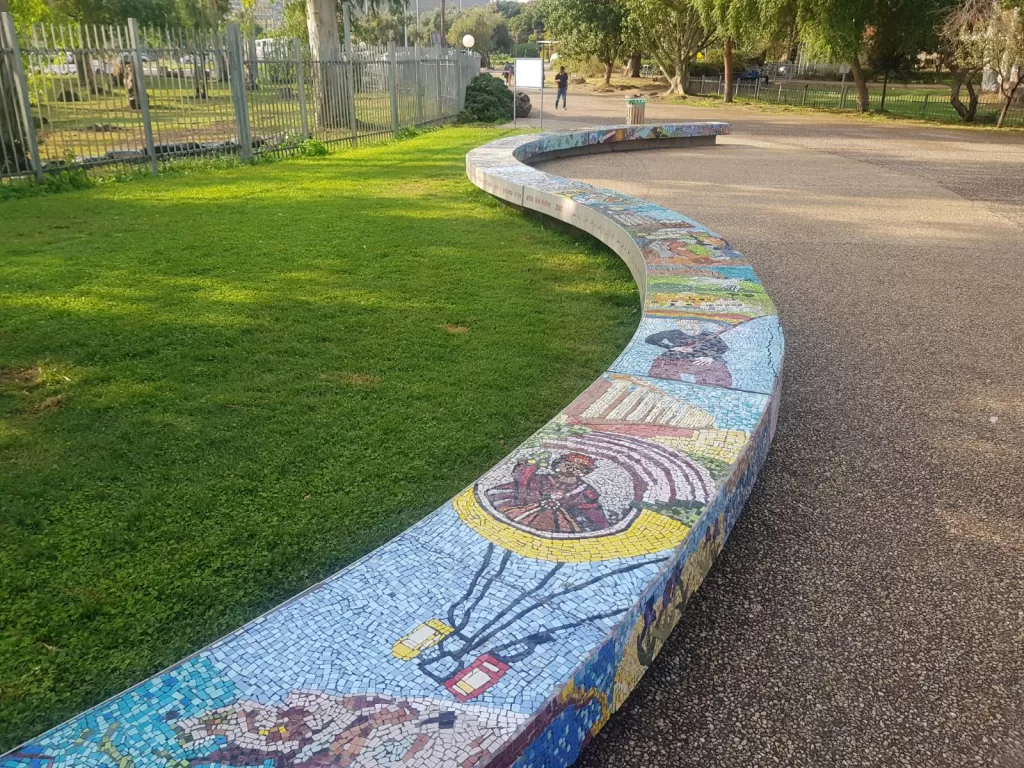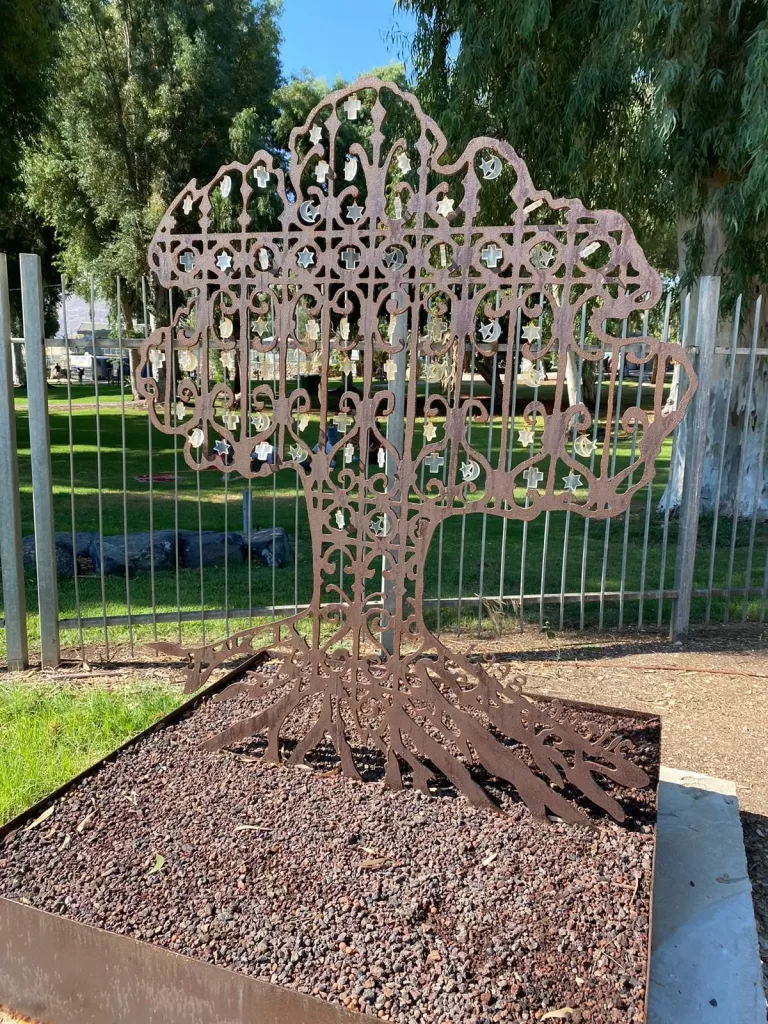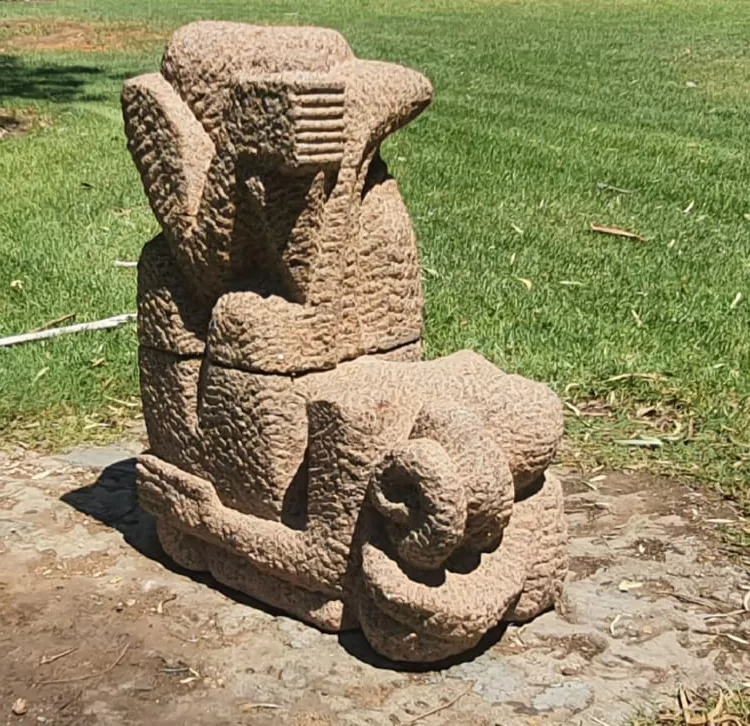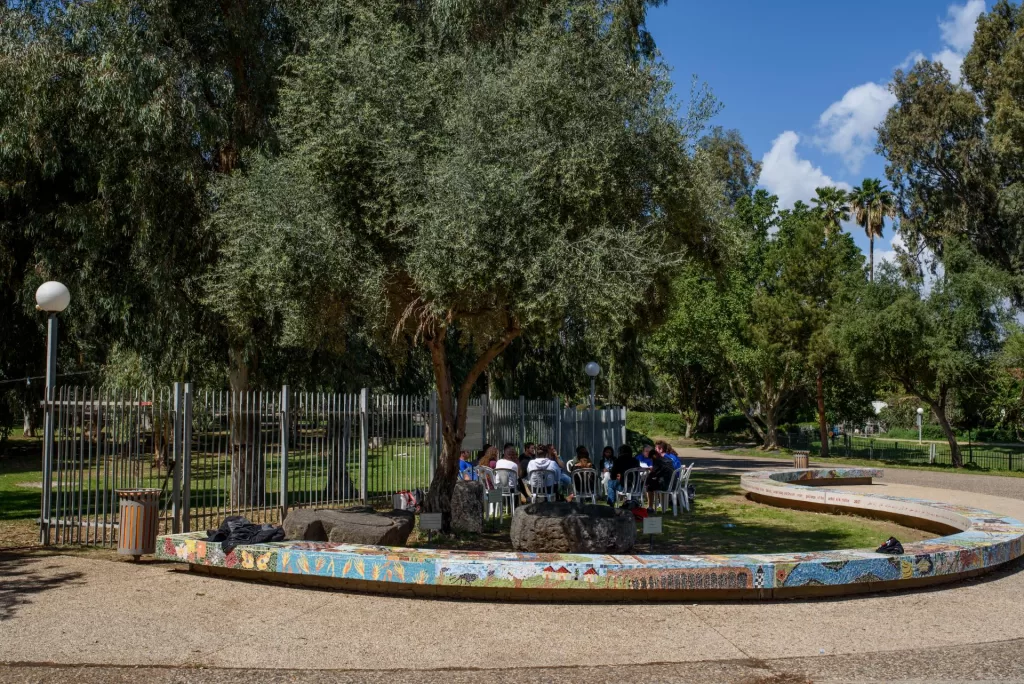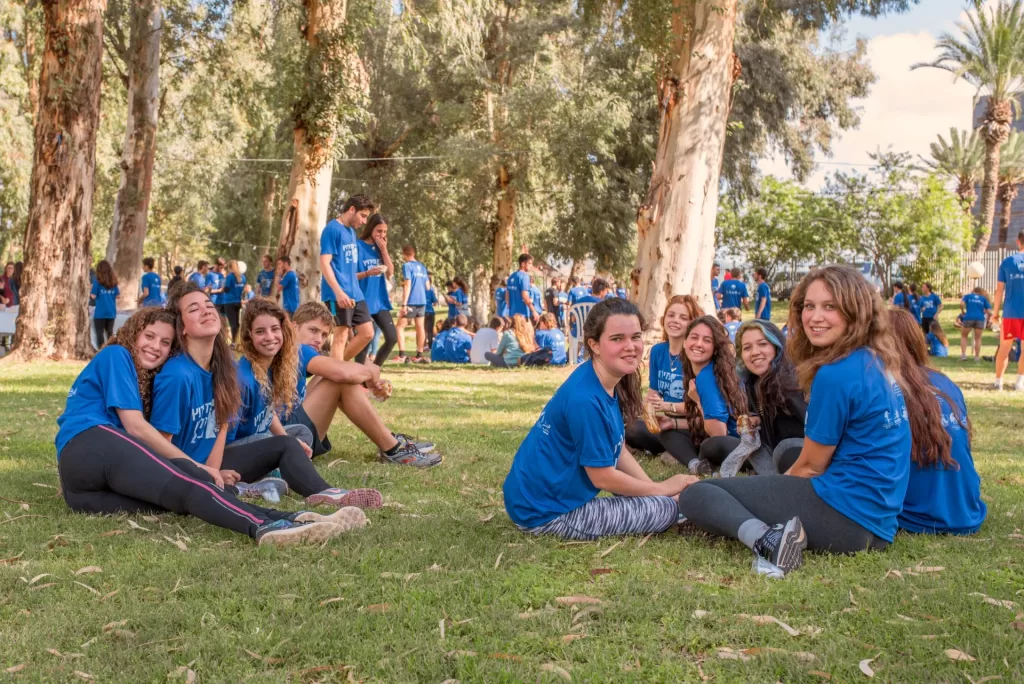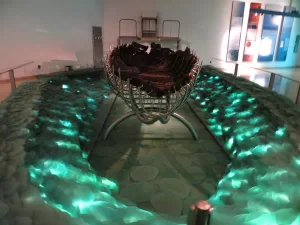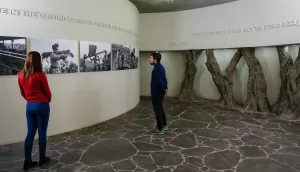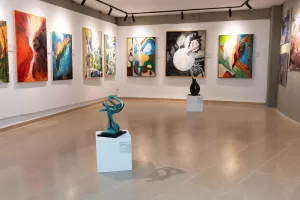The Galilee Plaza, outside the main building
The Yigal Allon center was constructed on the land of Kibbutz Genosar. As a founding and loyal member of the Kibbutz, it seemed obvious to the Kibbutz that a plot of land should be provided for the construction of a House that will commemorate Allon’s ways and values. The plot of land on which the center was established was previously part of the lake.
Yechiel Shemi, “Genosar Syllables”, 1986
This work won the Israeli sculpture prize in 1986. “Syllables” is a series of abstract sculptures that he made during the 1980s – 1990s, the late period of his work, which is characterized by the use of bare metal and wood surfaces. The emphasis is on the different connections between the different surfaces. While the metal represents strength, the wood represents softness. For Shemi this work symbolizes Yigal Allon.
“Gate of Friendship”, 2005
This work is made by 10 Jewish sculptures and 10 Arab sculptures that carved large lime stone blocks creating reliefs on both sides of the stone. By mounting one stone upon the other they constructed the “Gate of Friendship” that stands to a height of 8.5 meters at the entrance of the Yigal Allon Center.
“Bench”, 2007
Galilee map mad of mosaic- A bench 29 meters long was decorated by Jewish and Arab school children and students who created this community piece. The mosaic map shows and tells the story of the Galilee through the main settlements in the area. The map shows start with the most northern settlements in the Galilee and then moves south.
Orna Lutski, Olive, 1998
Among the Israeli and the Palestinian societies there is an ongoing discussion, similar to that of King Solomon’s Judgement, each side claiming symbolic ownership of the tree while trying to challenge the legitimacy of the opposing party to hold on to it. In her work, Orna Lutsky tries to make room for the idea of “joint ownership” of the olive tree, which recognizes the rights of the “other”, whatever they may be. Orna Lutsky, a plastic artist, sculptor and photographer, born in Jerusalem, she lives and works in Moshav Beit Oved.
Shlomo Zellinger, Binding of Isaac, 1976
In Israeli art, the binding of Isaac is a national symbol, representing the fate of the people of Israel in general and the fate of their sons in particular. The binding is related to the Holocaust and the War of Independence, when Abraham often represented the bereaved father and the suffering people of Israel. After the Yom Kippur War, the story was linked to a protest against the parents (Abraham) who send their sons (Isaac) to become victims of the war.
In the sculpture, Zellinger dismantles the symbol of the binding scene and shuffles the fragments questioning the conviction of the Biblical story, who the victim is and who is the sacrifice. Shlomo Zellinger, a French-Israeli sculptor and, has lived and worked in Paris since 1956. He was one of the founders of Kibbutz Beit HaArava and after its evacuation, one of the founders of Kibbutz Kabri.
The Tree Boulevard
Following the discovery of the 2,000-year-old boat and its new location in a dedicated room in the Yigal Allon Center, a tree specialist was invited who identified the twelve different tree types the boat is built from. The body of the boat is primarily Lebanese cypress and oak. Renovations made over the years include pine, carob, redbud, plane, sycamore, willow, hawthorn, jujube, laurel, and pistacia atlantica. The trees comprising the boat stand at the western edge of the entrance square.
The Palmach Forest
PICA, The Palestine Jewish Colonization Association, planted this heritage site eucalyptus forest in the 1930s. This forest is where the Palmach’s Company A first assembled for training in 1941, commanded by Yigal Allon. Allon also held his yearly meeting with Arab dignitaries in the forest. Sculptures and works from the various Spring Meetings were added over time.
